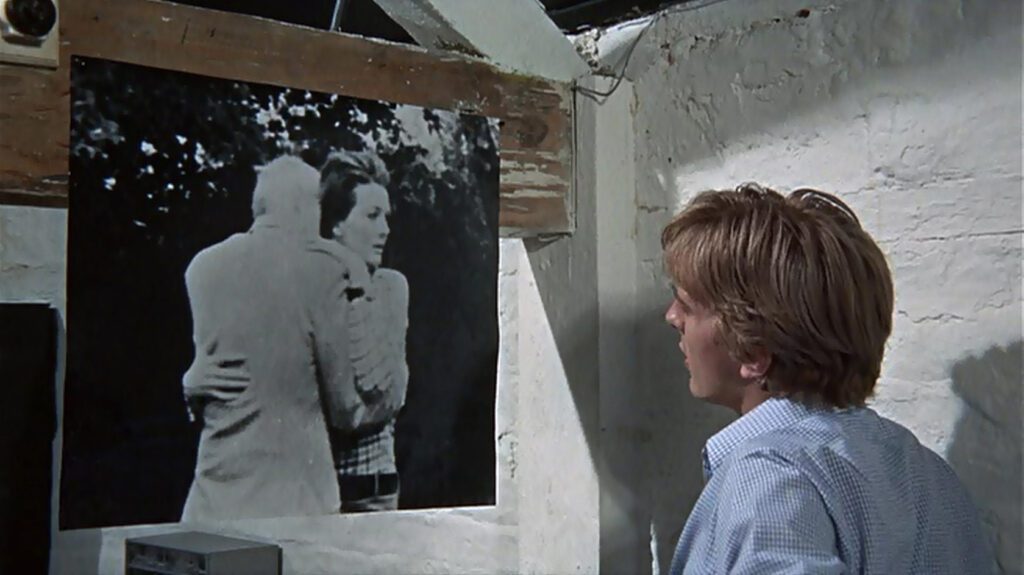
Blow-Up
1966, directed by Michelangelo Antonioni
About an hour into Blow-Up, Thomas, the fashion photographer played by David Hemmings, begins to review the photos he took in a park in Greenwich. The scene does many things at once, not least of which is to function as a master class in watching a movie. In the course of his gradual discovery, Thomas follows the same steps that an astute viewer should take to get the most out of a film.
After printing the photos in his darkroom, Thomas clips them around the edges of his studio and looks at them, going from one to the next, just as anyone watching a movie will link a series of images into a narrative. Like someone getting drawn into a movie, he begins with a vague suspicion. Vanessa Redgrave’s character, Jane, is peering away from her lover at something unknown. Thomas follows her gaze to the edge of the clearing and combs the dark woods with a looking-glass until he finds something ambiguous. He draws a box around the area and blows it up in the darkroom. Sure enough, a man appears to be hiding in the trees. He blows it up further.
So far, Thomas is doing exactly what anyone watching a movie should be doing. He pays attention to his intuitions; he lets the images speak to him, picking up the tiniest details; he probes ambiguities; he looks with faith and persistence; and when he finds something, instead of stopping he looks even deeper. Most of all he looks with intensity.
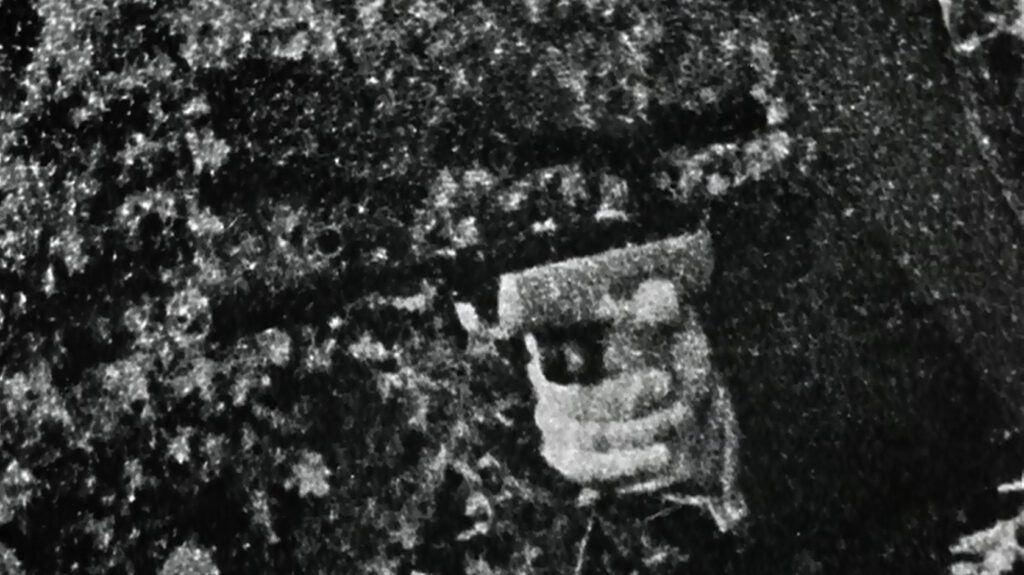
Like a focused movie viewer, Thomas is soon transported beyond the material realm. He puts on a jazz record, but after half a minute the music fades into the gentle sounds of the park – leaves rustling, a distant dog barking – as if he’s there in person. More than ever, the still photos begin to look like a story, and Thomas is magically immersed in it. Suddenly he finds what he didn’t know he was looking for: a gun pointing out of the trees.
But the lesson is not over. Again like someone studying a movie, Thomas has found the hidden detail, but he hasn’t interpreted it correctly yet. He thinks he’s saved someone’s life by distracting the woman. Interrupted for a while, he frolics with a pair of models on the studio floor – but suddenly, like a movie viewer returning to his reflections after a long rest, he has an epiphany. He kicks the models out and returns to the photographs, blowing up one more detail. There’s a dead body in the clearing. He’s witnessed a murder.
If we only watched movies with the same persistence that Thomas demonstrates in his studio, we would get a lot more out of them than passive stimulation. Not every film has the equivalent of the gun in the trees that Thomas finds, but even a poorly made film can teach us if we commit ourselves to the best possible viewing… and considering how much care it takes to make a movie, it shouldn’t be surprising how many films do contain “loaded guns”. Antonioni was not necessarily thinking of movies when he made this scene, but that hardly diminishes our reading of it. Like his other films, it’s an even broader lesson in seeing.
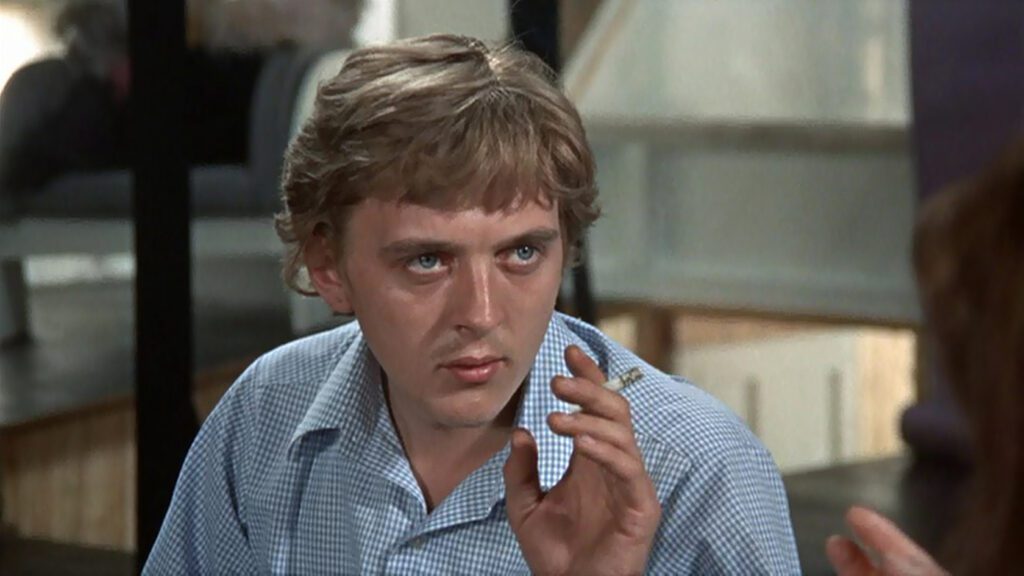
It’s obvious enough by the end, when Thomas “sees” an invisible tennis ball, that Blow-Up is about the act of seeing, but the opening tips us off with a pattern of ironies that continues through the whole film – starting with the mimes who, contrary to their expected silence, are raising a ruckus. Irony is a contrast between outward appearance and underlying reality, and it tends to expand the scope of vision because it shows something two ways at once. Irony erodes the preconceptions that impede our view of the world, often amusing us in the process – but when we laugh at the ironic, we’re often laughing at our own prejudices at the same moment that we drop them.
After the mimes, Thomas is introduced leaving a dosshouse for a Rolls-Royce. At his studio he chides a model for looking disheveled: “Who the hell were you with last night?” – which is ironic if we recall where he spent the night. After barking orders at his models and staff, he lets an old antique dealer bark at him. He expects the old man to be the shop owner, but instead it’s a young woman. She plans to leave antiques and move to Nepal, but Thomas calls out the irony: “Nepal is all antiques.” In Maryon Park, Thomas photographs a romantic-looking couple, and the woman, Jane, confronts him: “This is a public place. Everyone has a right to be left in peace.” The irony is lost on him that she is presently assisting in a murder. Later he tells his publisher that the park photos would make a peaceful finish to his violent series, not realizing they’re the most violent images he’s ever shot. A parade of anti-war protesters, instead of chanting loudly, marches silently through London. When Thomas’s studio is robbed, the only photograph left is a picture of the dead body, ironically the least useful clue in proving the crime. At the Yardbirds concert the fans are dead to the music but get worked up over a broken guitar.
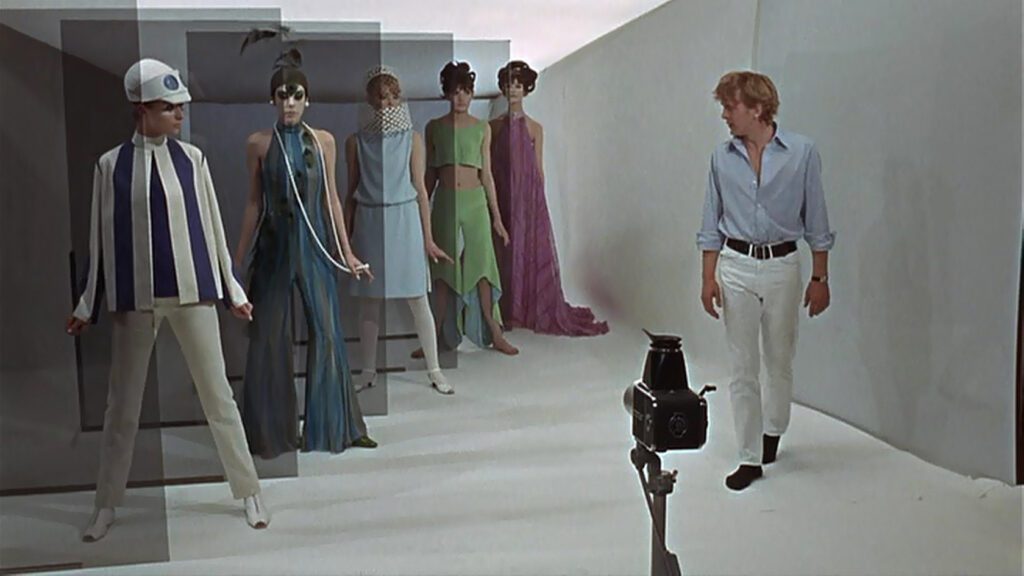
All of these ironies are incidental and pass quickly, but when Thomas examines the blown-up photos from his outing in the park, we can find several ironies that reflect on the whole film. First of all, for Antonioni, who so consistently steers his movies away from anything dramatic, there is a surprisingly powerful drama as Thomas discovers first the man in the woods, then the gun, then the victim’s body. It’s ironic to find the director breaking his own rule, but it’s also ironic that in a moving picture the most dramatic images are still photographs. Blow-Up is Antonioni’s second color film, yet its most exciting elements are black & white. For that matter it’s also a sound film whose most expressive scene is nearly silent.
Irony usually presents truths in a surprising way, lowering resistance to new insight. Seeing mimes shouting and playing like ordinary people deepens their character, making them more sympathetic when they reappear at the end. Making a series of black and white photographs the dramatic high point of Blow-Up can help viewers examine their conditioned preferences for movement, color, and sound in movies.
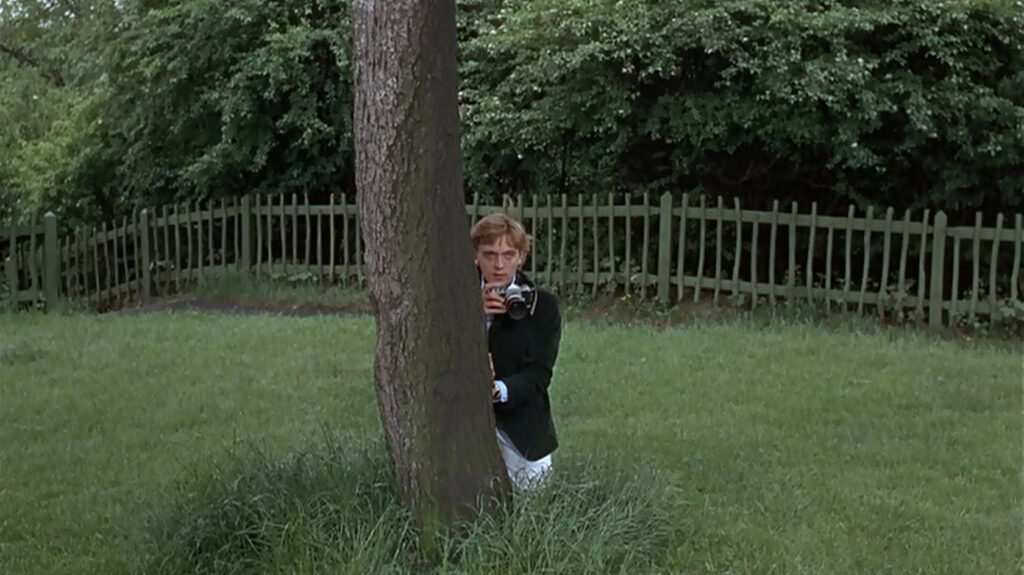
Maybe the greatest irony in Blow-Up is that a photographer, who should already be expert at seeing, spends most of a whole day, from one morning to the next, learning how to see. His scene of discovery in the photographs is like a class, encapsulating his lesson, but it isn’t complete until he takes it out into the real world. Each of Blow-Up‘s last three scenes is built around an object of no value, a “nothing” – the fetishized neck of a bashed-up guitar, the dead body in the park that Thomas’ friend Ron doesn’t believe in, and the mimes’ tennis ball. The concert and the party are gatherings of unhappy and self-absorbed individuals, but the mimes are a genuine community united by a shared ability to create. In the last scene the “nothing” will become “something” because people are prepared to see it. To top it off, Thomas himself starts out as a nothing, a shallow man without close relationships, living for money, status, and an aura of coolness, but by the end he will become “something”.
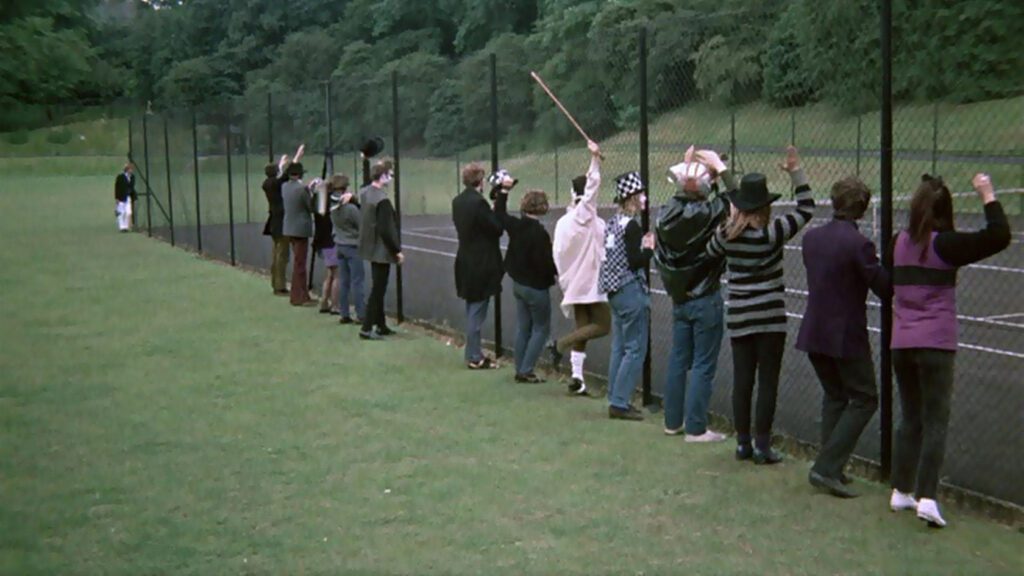
When the mimes invite Thomas into their pantomime tennis game, beckoning him to return an invisible ball lobbed over the fence, he accepts without much conviction. Their perception, and the sense of wonder that comes with it, is still greater than his, but the experiences of the past 24 hours have prepared him to rise to their level. Once he puts down his camera, leaving behind his mechanical point of view, he’s able to enter the mimes’ world. He begins to hear the phantom tennis ball, the way he had heard the sounds of the park in his studio, or like the girl in Red Desert whose awe toward the phantom ship turns into a gorgeous siren song. Thomas then vanishes from the screen – but what really vanishes is his ego that stands in the way of seeing all the wonder around him.
CONNECTIONS:
Earth – Character named after the apostle Thomas
City Lights – Story defined by an arc of improved vision, with a lesson in seeing the world better
Wild Strawberries – Transformation of a character in 24 hours
La notte – Moment that models the intensity required to view a film properly
Winter Light – Character named after the apostle Thomas
Red Desert – Accepting a mystery (phantom ship / tennis ball) leads to expanded vision; character enveloped in wonder hears sounds (wordless song / sounds of park) no one else can hear
I Knew Her Well – Woman who seems shallow but is deep, vs. man who starts shallow & becomes deep
Black Girl – Multiple layers of irony pointing to a new way of seeing
The Structure of Crystal – Movie about vision with key instances of irony; character seen from overhead at end with insinuation of self-effacement
Chinatown – Irony of a photographer or detective who is unable to see things properly
The Passenger – Lesson in watching a film; hidden gunman revealed in photograph/window
Nostalghia – Requirement of active participation to complete an experience
About Dry Grasses – Story of a photographer who may finally learn to see; structural ironies